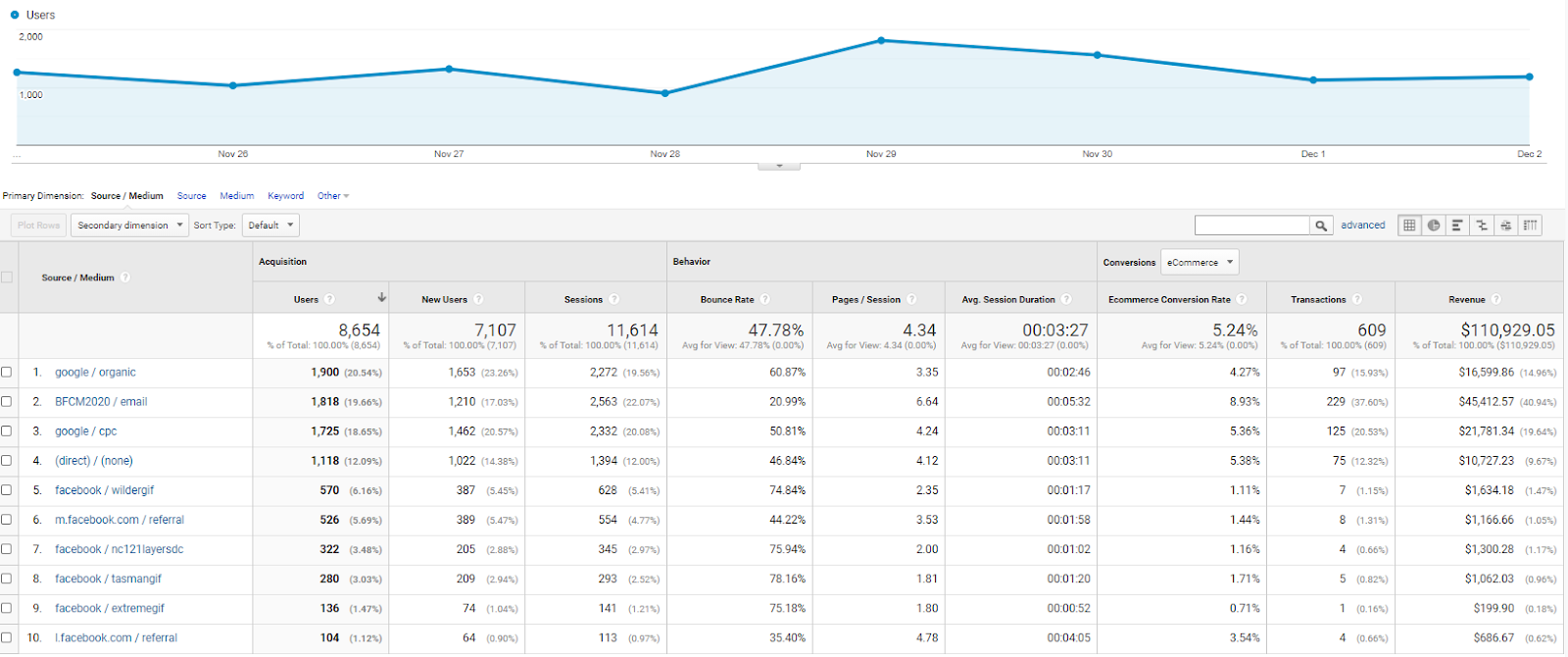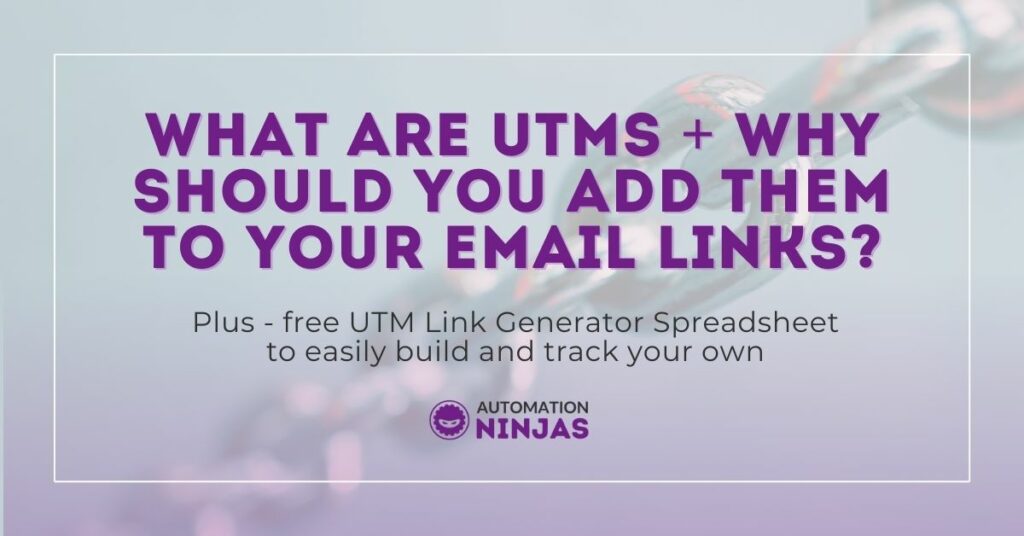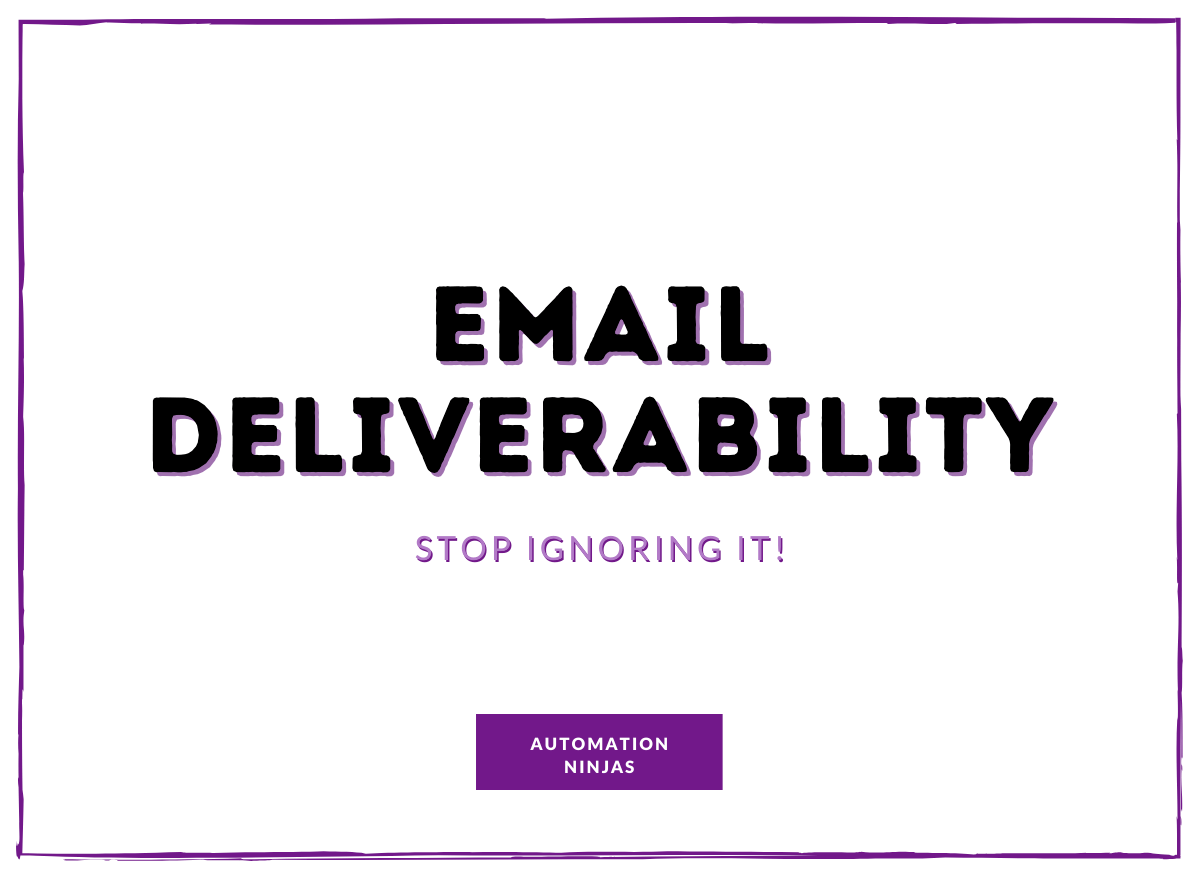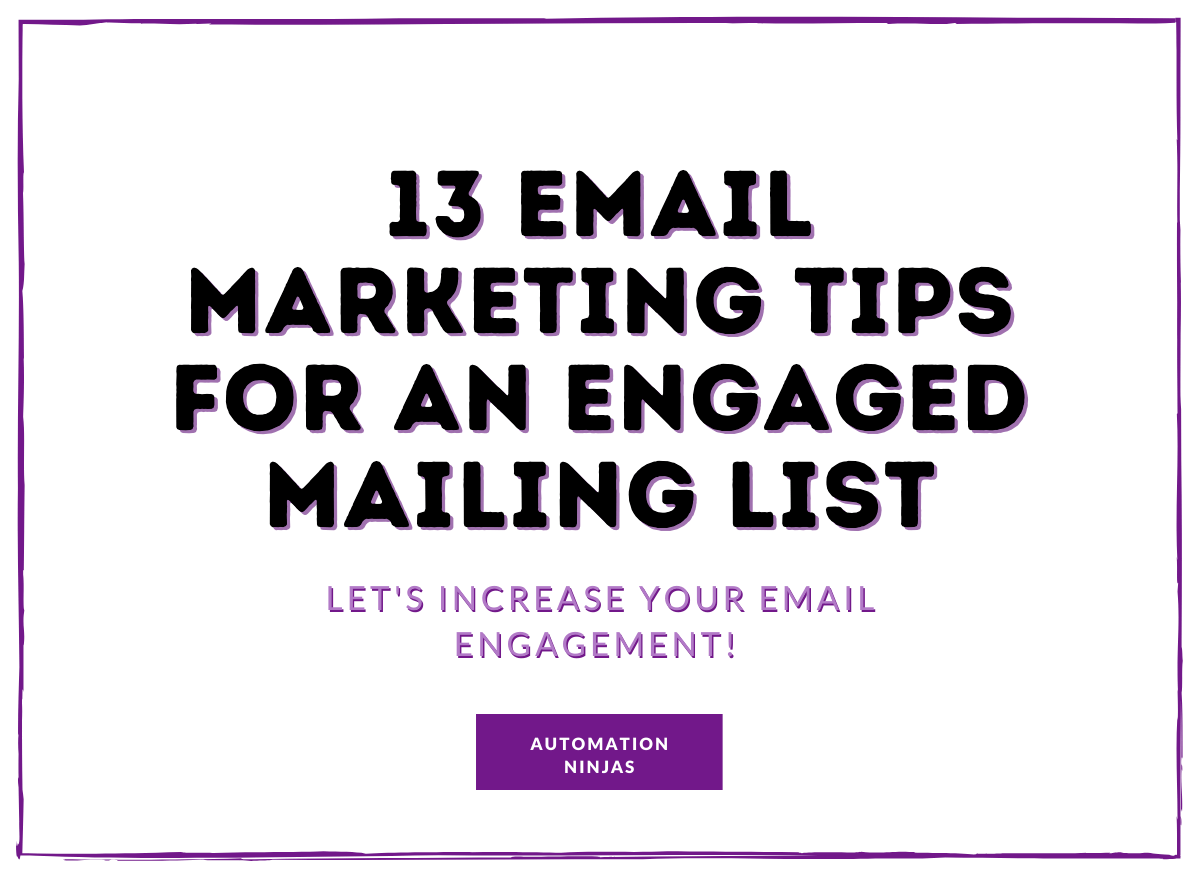Data in your business.
The list of things you could be tracking is massive.
The list of what’s not important to track is also massive.
Filtering out what’s important aside, you could kill yourself with the numbers if you try and start tracking everything your business would benefit from tracking.
Don’t do it to yourself. Take things chunk by chunk.

Today I’m going to cover one important thing.
That important thing is using UTM links in the email campaigns you’re sending out to your audience.
In this blog, I’ll be sharing with you:
- Why it’s important to use UTMs
- How to create UTM parameters
- How to embed the practice of using UTM links into your business
- I’ll even show you how the UTM data is shown in Google Analytics
I’ve also created a handy little resource for you so you can go away and start generating your UTM links immediately - it’s a nice little spreadsheet which keeps a neat log of your UTM links. I’ve named it the ‘Ninja UTM Link Generator Spreadsheet’ and it takes the faff out of creating UTMs and keeping track of them.

UTM stands for Urchin Tracking Module
Excuse me? Urchin?

A UTM is a simple bit of code which is added on the end of a URL which allows you to track campaigns in Google Analytics.
Here’s an example of what a UTM could look like:
www.mywebsite.com/?utm_source=infusionsoft&utm_medium=email&utm_campaign=christmas2020
Note: people also say ‘UTM parameters’, which is - in short - a fancy word for ‘measurable factors’.
But how do you generate your UTM Parameters to use in emails to your list?
- Get the URL you want to send traffic to
- Use a UTM builder to add the data you want to track (more on this step in a little bit)
- Shorten that new URL you’ve built (if needed)
Why should you be using UTMs in your email links?
UTMs push data about your link clicks into your Google Analytics. Link clicks are important data to be tracking.
You might think it’s all about the open rates, but nope - open rates actually work in a bit of a strange way - and they’re not always to be trusted...
Email sending platforms will add a tiny image into your email - it’s a little pixel which pretends to be an image.
If that pixel loads, it’s considered that this email has been opened.
The problem is that if people don’t have images enabled, this pixel might not register.
We don’t set goals around open rates for this reason. It’s not a stable metric.
The most stable metric is the email clicks. This really does show you how engaged people are with the content you’re emailing them.
Your marketing automation software will automatically show them as having opened your email if they click - hurrah!
So if clicks are the most stable metric, and they show us how good our calls to actions are, how good the copy in the email is, how interesting what you’re sending people to is to the user…. Then let’s get tracking link clicks properly.
Without adding UTMs to your links, Google can show a lot of your traffic as ‘direct, none’.
This happens a lot with traffic from Outlook - the majority will show as direct/none in your google analytic reporting without UTMs - which is NOT TRUE GOOGLE.
This is frustrating because it’s not ‘direct’ and it’s not ‘none’! But it’s simple to fix this - send people to your links which have UTM parameters added, and Google Analytics will read that data and will report on it properly.
Think of UTMs like adding a post-it note to help google identify and organise its shiz.
Something important about data is that you should be consistently interrogating it.
To do that effectively, the data should be set up in a way that’s easy to access and in a way that it’s clear to you what the meaning behind those numbers is. Otherwise - let’s face it, you’ll be a data-dodger because you won’t have a grip on what you’re doing.
I’m going to go straight in here with an example of what the UTM link data can show like within Google Analytics - check out #2 in the list below:

Our lovely client Phil over at New Zealand Natural Clothing has given us permission to use this. He absolutely smashed it this year with a Black Friday email campaign we devised.
It was amazingly useful to see the analytics data coming in, showing the email performance because we used UTM parameters on the links used in the email campaign.
We can see not only the clarity of how well the email campaign performed, but we can see that the email campaign drove the highest conversion rates too. By using UTMs, we got that clarity for our client. And it blew his socks off!
So in the data, you see #2 - ‘BFCM2020? That was our in-house name for his Black Friday Cyber Monday 2020 campaign. We were able to see the stats on the email campaign we had running for him for Black Friday.
This enabled us to tell Phil how the email campaign massively outperformed both his Google ads and Facebook ads this year... in all areas. (winner!)
So how do you manually build a UTM and what are the different parts of it?
I want to walk you through the information a UTM link contains. Let me pop that UTM link example here again:
www.mywebsite.com/?utm_source=infusionsoft&utm_medium=email&utm_campaign=christmas2020
That UTM link contains:
- www.mywebsite.com: - this is my original URL.
- ? - this question mark is what informs Google that there is descriptive data coming alongside this URL.
- utm_source=infusionsoft - this defines the campaign sources, in this case it’s ‘infusionsoft’
- utm_medium=email - this defines the campaign source, in this case it’s ‘email’
- utm_campaign=christmas2020 - this defines the campaign name, in this case it’s ‘christmas2020’
(The ampersands within the link just tell google that there is more descriptive data coming next)
So what should you be entering for each of those pieces of data in the URL string?
Campaign Source
Where the visitor came from to get your link. Who is the referrer? For emails you’re sending, the referrer is YOU and you’ll likely use the name of your marketing automation platform, i.e. Infusionsoft for us. That might be ‘mailchimp’ or ‘kajabi’ for you perhaps. Or if
Campaign Medium
What medium are you using for marketing? That’s likely to be email, but it could be ‘cpc’ or ‘social’ if you’re setting up UTM links for uses other than sending people to your emails.
Campaign Name
Your campaign name is unique to you. Be sure to add a date reference (year? month?) to it if it’s a campaign you’ll run again, e.g. christmas2020 or summersale2020.
Campaign Content
This is an optional field. Here you could identify the paid keywords if it’s a cpc campaign.
Campaign Term
This is an optional field. Only use this if you’re using paid keywords.
It’s required to have the source, medium and campaign name in your UTM, but the term and content is optional - only add this if you need to get that extra detail reported on.
Google has a UTM Generator - and we like it.
To build your UTM link, you could use Google’s handy UTM link generator: https://ga-dev-tools.appspot.com/campaign-url-builder/ I’ve used this a lot, and I like the simplicity of. But one thing it can’t do is keep track of your UTM’s for you.
This is why I created my little tool - it’ll generate your links for you, and you can use it as a record of all the UTM links you’ve created.

A bit of detail you’ll find useful when creating your UTM links:
Get clear on your naming conventions. Keep your methodology the same. This is why my handy Ninja UTM link generator spreadsheet is your friend. Seeing all your UTM’s in one place helps you stick to the same naming conventions and keeps you organised.
Top tip - You might find that resource especially important if you’re in a team and need to all be onboard with the same naming conventions.
Lower Case
Keep your UTM data all lower case, as standard. If you use capitals, Google sees it as a new, unique tracking - so ‘Infusionsoft’ and ‘infusionsoft’ will purport separately. That’s not just annoying but it makes interpreting and analysing your data more complex. The data becomes diluted. I suggest keeping it simple and have a hard and fast rule of it being lowercase throughout.
Underscores
You can use underscores to break things up if you have something long to enter, so instead of freepairofsocksmarch2020 which is pretty hard to scan-read, you could have free_pair_of_socks_march2020 and google will still love you.
Shortlinks
What I like about the Google UTM generator is that it has the option to generate a nice neat shortlink for you too, without having to copy/paste into Bitly to shorten the link.
Shortening your long UTM URLs makes them much less messy looking. We like things short and neat! And another reason to shorten your UTM links is that they can look quite ‘spammy’ in their original form. You may find people feeling a little suspicious over clicking a loooooooooooooong link with lots of strange characters and words within it.
I like using Bitly to generate short links, so if you’re using the Ninja UTM generator spreadsheet then it’s just a copy-paste exercise to grab that shortlink for the UTM link you’ve used the spreadsheet to build. I have a column for you to log your shortlinks within that spreadsheet.

Job well done
We spend so much effort driving traffic to our websites, it’s really worth doing it properly.
Don’t be a data-dodger!
And don’t just let Google decide how to group your traffic sources/mediums. Send out emails to your list with UTM parameters on your links.
I’ve given you everything you need to start doing this TODAY. Grab the free resource, start generating your UTM links, and see that data trickling in inside Google Analytics.






